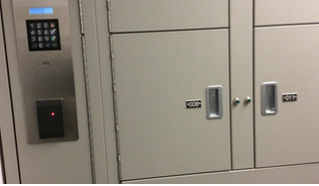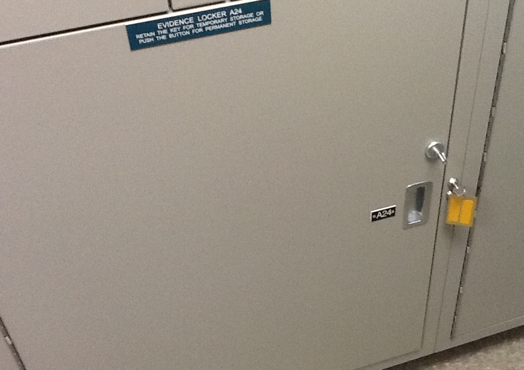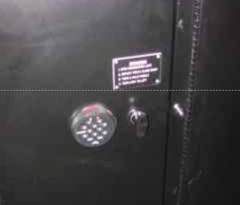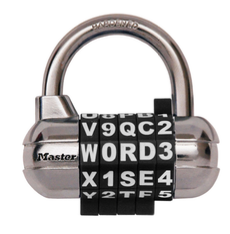Each month, IAPE's primary instructor, Joe Latta, answers one of your questions. Consider writing us if you have a question that needs an answer. We would love to hear from you.
|
|
|
Dear Joe,
My name is Officer Chris Harvey and I assist Officer Anthony Morello with the management of our police department's evidence room. We managed to get some money freed up this year in our budget to buy some evidence related items.
Consequently, we are researching the idea of possibly having an evidence rejection locker/station setup when one of our officers submits a piece of evidence incorrectly/incompletely.
Would you be able to help us out, (or point is in the right direction), regarding the best procedure for an evidence rejection locker/station setup?
Also, if you could forward any related purchases that you recommend, that would be much appreciated as well.
Thank you,
Officer Christopher Harvey
Lower Merion Township Police Department
Dear Officer Harvey,
The rejection of evidence, sometimes referred to as the Right of Refusal is typically placed into a Trouble Locker. First and most it is important to establish a policy that instructs officers that any improperly packaged or documented evidence will be returned to the submitting employee via the Trouble or Rejection Locker.
To answer your questions there is a myriad of ways that this can be accomplished that is a driven by how much you can afford. Below is a list of several options:
Electronic Lockers 
Electronic lockers are generally a typical manufactured evidence locker that has some type of electronic locks that provides access (i.e. electronic keypad and pin number or swipe card).
Manufacture Evidence Lockers - With Keyways
 Most new evidence lockers are completely keyless. In this custom design a selected number have had keyway installed. The master key may be retained by the Watch Commander (OIC), under lock and key. When the removal occurs, the OIC (Officer in Charge) opens the lockers for the submitting officer to retrieve. (Not a preferred method as other personnel may have access to the evidence) Most new evidence lockers are completely keyless. In this custom design a selected number have had keyway installed. The master key may be retained by the Watch Commander (OIC), under lock and key. When the removal occurs, the OIC (Officer in Charge) opens the lockers for the submitting officer to retrieve. (Not a preferred method as other personnel may have access to the evidence)
Manufacture Evidence Lockers - Mechanical Lock
Manufactured evidence lockers with a user installed  mechanical combination lock that can be reset after each use by the Property Officer. mechanical combination lock that can be reset after each use by the Property Officer.
School or Gym Lockers:
For departments with limited budgets, the utilization of a gym locker with a
Set  Your Own WORD Combination Padlock is frequent utilized. The evidence officer sets Your Own WORD Combination Padlock is frequent utilized. The evidence officer sets  the combination (word) and sends an email to the officer needing to correct his/her evidence. After the item is corrected the property officer then resets the numbers. the combination (word) and sends an email to the officer needing to correct his/her evidence. After the item is corrected the property officer then resets the numbers.
Regards,
Joe
|
HEADLINES
If you have been following IAPE's newsletters (Ask Joe), Evidence Log and Facebook over the years you may have noticed an ever increasing amount of news stories about cold case murders and sexual assaults. This message is to any departments that don't have a dedicated cold case squad, which may be most departments. There is a trend of 30, 40, and 50 year old cold case homicide cases being solved with DNA, Familial DNA and the latest trend of using the Genealogy data bases including GEDmatch.com. GEDmatch.com provides DNA and genealogical analysis tools for amateur and professional researcher and genealogist. The reason I'm bringing up this topic is that I believe there could be hundreds of these old unsolved cold case murders and assaults with evidence in our property rooms that everyone has forgotten about. In fact in many of these cases most of our staff members were not even born and its likely new officers, detective and the administration has no knowledge of the case.
IAPE would strong encourage you to BOLO - Be On The Look Out - for some of these described cases such as the ones below which have been solved in the last several weeks.
Man arrested for second decades-old Stanford University cold-case murder
Leslie Perlov, a Stanford grad, and Janet Taylor, the daughter of a Stanford
football coach
, were killed 13 months apart in 1973 and 1974. They were each strangled and last seen leaving the Stanford campus. Both were 21.
On Thursday, John Getreu, 74, was charged with Taylor's murder -- six months after he was charged with Perlov's.
His rap sheet also includes convictions for the rape and murder of a 16-year-old girl in Germany 55 years ago and for the rape of a woman in California in 1975, officials said.
The latest charges were brought by the San Mateo County Sheriff's Office, which said in a news release that its homicide investigators always believed the Taylor and Perlov killings were connected.
The Santa Clara County Sheriff's Office investigated the Perlov case.
"For many years, both killings remained unsolved despite the sincere efforts of seasoned investigators," the news release said.
The break came when Santa Clara investigators submitted DNA from the Perlov crime scene to the genealogy website GEDMatch.
Through further investigation, they determined the DNA belonged to Getreu of Hayward, Calif., the news release said.
After his arrest in November, San Mateo investigators found DNA matching Getreu's on clothing worn by Taylor, according to the news release.
"The break that Santa Clara County came up with from their crime lab was critical to us being able to solve this case," Assistant San Mateo County Sheriff Gregory Rothaus said, according to the
San Jose Mercury-News
.
Rothaus was also quoted as saying, "Law enforcement is not giving up on victims and we have new DNA technology that is a great tool for us."
--------------------------------------------------------------------------------------------------
DNA, family tree help solve 52-year-old Seattle murder case
SEATTLE (AP) - Seattle police have solved a murder from nearly 52 years ago with the help of DNA and a family tree - a method investigators are increasingly using to crack cold cases.
Susan Galvin was a 20-year-old police records clerk. She was found raped and strangled in a parking garage elevator in 1967. One potential suspect - a professional clown - was cleared by DNA evidence in 2016.
Last year, the department hired a private lab which entered the killer's DNA into a public genealogy database. An analyst found ancestors of the killer, created a family tree and identified a possible suspect as Frank Wypych, a former soldier who died in 1987.
Police said Tuesday they exhumed his remains earlier this year to collect DNA and confirmed it matched. They're investigating whether he may have killed anyone else.
|
|
|
2019 CLASSES
Fort Collins, CO
June 4, 2019
June 4 - 5, 2019
14 Seats Left
June 18 - 19, 2019
16 Seats Left
June 24 - 25, 2019
5 Seats Left
July 16 - 17, 2019
July 23 - 24, 2019
17 Seats Left
July 29 - 30, 2019
20 Seats Left
August 5 - 6, 2019
12 Seats Left
August 13 - 14, 2019
12 Seats Left
Class Full
August 21 - 22, 2019
8 Seats Left
September 11 - 12, 2019
11 Seats Left
September 24 - 25, 2019
October 2 - 3, 2019
October 16 - 17, 2019
October 29 - 30, 2019
November 4 - 5, 2019
November 14 - 15, 2019
December 3 - 4, 2019
ADDITIONAL CLASSES BEING PLANNED IN 2019
|
|
|
 |
Can't Travel?
IAPE also offers
ONLINE TRAINING
Save money on lodging, meals and travel!
To learn more about the IAPE's ONLINE TRAINING
or to register please visit:
Call for details on
sponsoring a class!
|
Got a Job?
Need a Job?
IAPE is delighted to announce that we have a new section for posting a job announcement or checking job opportunities.
|
Become a
Certified Evidence Specialist
Along with the IAPE's extensive
evidence training courses, the IAPE offers our members the opportunity to become Certified Property and Evidence Specialists.
Certification is available to our law enforcement agency members as well as our corporate members. The designation of CPES or CCPES indicates that the holder is a professional who has completed requirements in training; has worked in the field for a required period of time; and has demonstrated their knowledge of professional standards through a written test. More than 2,000 IAPE members have achieved the CPES or CCPES designation.
|
|
 |
|